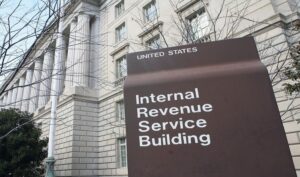
U.S. Citizenship and Immigration Services (USCIS) published a final rule (Fee Schedule and Changes to Certain Other Immigration Benefit Request Requirements) in the Federal Register this week that officially implements an increase for several immigration filing fees in April 2024. The USCIS fee increase affects most forms, making it more expensive to request many employment-based and family-based immigration benefits.
While there are some minor reductions on select forms, the USCIS fee increase will make adjustment of status significantly more expensive for certain applicants. The agency justifies the higher fees to “more fully recover its operating costs, reestablish and maintain timely case processing, and prevent the accumulation of future case backlogs,” according to their statement. USCIS is desperately in need of more income to offset the increased cost of accommodating the incoming asylum population and the agency's risings costs.
Notable changes in the proposal that go beyond changes in fees include:
- Removing the separate biometric services fee and including it as part of the main benefit fee.
- Requiring separate filing fees for Form I-131 and Form I-765 when filed in conjunction with adjustment of status (Form I-485).
- Shifting policy to one that puts more burden on those that can afford to pay in order decrease or eliminate fees for individuals in categories that are less likely to have the means to pay (such as asylum, as well as victims of human trafficking and other crimes).
USCIS Fee Increase is Significant for I-485 Applicants
The filing fee for Form I-485, Application to Register Permanent Residence or Adjust Status, will increase from $1,225 to $1,440. But the USCIS fee increase will disproportionately hit adjustment of status applicants who request employment or travel benefits or who have children applying at the same time.
If possible, individuals who are considering adjustment of status, particulary those who will also request EADs and travel authorization, should try to file before April 1 to avoid the increased filing fees.
Eliminating the No-Cost EAD and Advance Parole
Currently, USCIS waives certain fees for adjustment of status applicants. In most cases, the fee to file Form I-765 (Application for Employment Authorization) and Form I-131 (Application for Travel Document) are waived with a pending I-485 application. The agency’s new immigration fee schedule returns to a model of charging separate fees for Forms I-485, I-765, and I-131. The published rule does make an accommodation for adjustment of status applicants seeking employment authorization. They will pay half the standard filing fee for Form I-765, as long as they paid the full fee for a concurrently filed or pending adjustment application.
Unfortunately, this move drastically increases the cost for individuals to adjust status to permanent resident. Instead of paying $1,225 to file Forms I-485, I-765 and I-131, most family-based applicants will be forced to pay $2,330. That’s a 90 percent increase. It affects many U.S. citizens. A large percentage of adjustment cases are for the foreign national spouses of U.S. citizens.
I-485 Discount for Certain Children
The proposed rule would have removed the reduced fee for children (under age 14) filing with a parent. In the long-standing fee schedule, certain children receive a reduced fee if filing Form I-485 with a parent. After public comment, the final rule does not eliminate the fee reduction. However, the child fee increased by $200.
Family-Based Immigrant Visas Petitions Get More Expensive
Under the new USCIS filing fees, petitioning family members for a green card gets more expensive. The fee to file Form I-129F (Petition for Alien Fiancé) increases 26 percent to $675. The change makes it $140 more expensive for U.S. citizens to petition a fiancé for the K-1 visa. Likewise, the fee to file Form I-130 (Petition for Alien Relative) to help family members acquire a green card also increases 26 percent to $675. Individuals who are able to file online may be able to save $50.
Citizenship Fee Increases Moderately
Applicants for U.S. citizenship are somewhat insulated by the USCIS fee increase. The new fee for Form N-400, Application for Naturalization, is $760. The increase of $35 is only a 5 percent adjustment. However, because the biometric service fee is now integrated with the USCIS filing fee, applicants age 75 and older will no longer benefit from a savings. Seniors will see an effective fee increase of 19 percent.
A major reason that naturalization applicants will experience a smaller increase than other requestors of immigration benefits is President Biden’s Executive Order on Restoring Faith in Our Legal Immigration Systems and Strengthening Integration and Inclusion Efforts for New Americans (E.O. 14012). The order instructs the Secretary of Homeland Security to make the naturalization process more accessible to all eligible individuals, including through a potential reduction of the naturalization fee and restoration of the fee waiver process.
However, executive action doesn’t make adjudicating N-400 applications any less expensive. Therefore, USCIS must recoup these expenses from other form filers.
Maintaining a Green Card
Permanent residents get a break if they need to renew or replace a 10-year green card. The fee to file Form I-90, Application to Replace Permanent Resident Card, will actually decrease. Over the past 20 years, Form I-90 has experienced significant fee increases. But the new proposal will decrease the cost from $540 to $465 for paper-based filers.
Conditional residents (with a 2-year green card) who must file Form I-751, Petition to Remove Conditions on Residence, will experience a 10 percent USCIS fee increase when the changes go into effect. The fee to file Form I-751 with biometric screening will increase from $680 to $750. It’s not clear at this time USCIS will access the fee for children included on the same petition.
USCIS Fee Increase by Form
The proposed immigration fee increase affects most forms. In some cases, there is actually a small improvement in the fee. We’ve listed some of the most commonly used family-based USCIS forms:
| Form | Current Fee | New Fee | $ Change | % Change |
| I-90 | $540 | $465 | ($75) | (14%) |
| I-129F | $535 | $675 | $140 | 26% |
| I-130 | $535 | $675 | $140 | 26% |
| I-131 | $660 | $630 | ($30) | (5%) |
| I-131A | $575 | $575 | $0 | 0% |
| I-485 | $1,225 | $1,440 | $215 | 18% |
| I-751 | $680 | $750 | $70 | 10% |
| I-765 | $495 | $520 | $25 | 5% |
| N-400 | $725 | $760 | $35 | 5% |
| N-565 | $555 | $555 | $0 | 0% |
| N-600 | $1,170 | $1,385 | $215 | 18% |
| All fees listed include biometric services fee if required. In certain cases, select forms may be filed online for a discounted fee. | ||||
This is a partial list of forms. For a complete list of forms and fee changes, refer to the Federal Register.
What Happened to the Fee Increase from 2023?
USCIS posted a proposed rule in January 2023. After receiving feedback from stakeholders, the final fee rule includes several changes compared with the initial proposal. For example, compared with the proposed rule, every fee is the same or lower in the final rule.
Agencies like the Department of Homeland Security must follow an open public process when they issue regulations. This requirement includes publishing a statement of rulemaking authority in the Federal Register for all proposed and final rules. So when DHS wants to implement a USCIS fee increase, it must publish a proposed rule in the Federal Register. Immigration stakeholders and the public have an opportunity to comment, but is very likely that DHS will finalize a rule (fee schedule) that is similar to their proposal.
After the 60-day public comment period, DHS may modify its rule or publish a final rule that includes no accommodations for the public comments.
Comparison to the Trump Attempt to Increase Fees
USCIS typically reviews and updates immigration fees every two years, but the current fee structure dates back to December 23, 2016. That’s because a 2020 Trump administration immigration fee increase was shut down by a federal judge.
The Trump administration’s fee increase had a goal of limiting immigration outside the lines of immigration law. Immigration advocates and many politicians criticized the administration’s fee schedule. The final rule was scheduled to go into effect on October 2, 2020, but a federal court struck down the final rule. The fee hike would have increased naturalization fees by $500, forced asylees to pay fees, and would have used USCIS filing fees to fund certain ICE enforce operations.
In the end, USCIS did not increase any filing fees during the Trump administration. But that also left a larger operating deficit. Unlike most federal agencies, USCIS receives most of its funding from fee collection. They charge most requesters of immigration benefits a fee. This fee pays for costs to adjudicate the forms and also offsets the cost for other types of immigration benefits that do not require a fee. When the COVID-19 pandemic hit, the agency closed offices and paused most in-person services. This further deepened USCIS budget problems.
When New Immigration Fees Go into Effect
The new USCIS fee increase will go into effect on April 1, 2024. You must also use the newer edition of the forms listed above on this date. USCIS will use the postmark date of a filing to determine which form edition and fees are correct but will use the received date for purposes of any regulatory or statutory filing deadlines. Therefore, you must use the new fee schedule and forms if your mail is sent April 1 or later.
About CitizenPath
CitizenPath provides simple, affordable, step-by-step guidance through USCIS immigration applications. Individuals, attorneys and non-profits use the service on desktop or mobile device to prepare immigration forms accurately, avoiding costly delays. CitizenPath allows users to try the service for free and provides a 100% money-back guarantee that USCIS will approve the application or petition. We provide support for Adjustment of Status Package (Form I-485), Immigrant Visa Petition Package (Form I-130), and several other immigration services.
Want more immigration tips and how-to information for your family?
Sign up for CitizenPath’s FREE immigration newsletter and
SAVE 10%
on our immigration services






